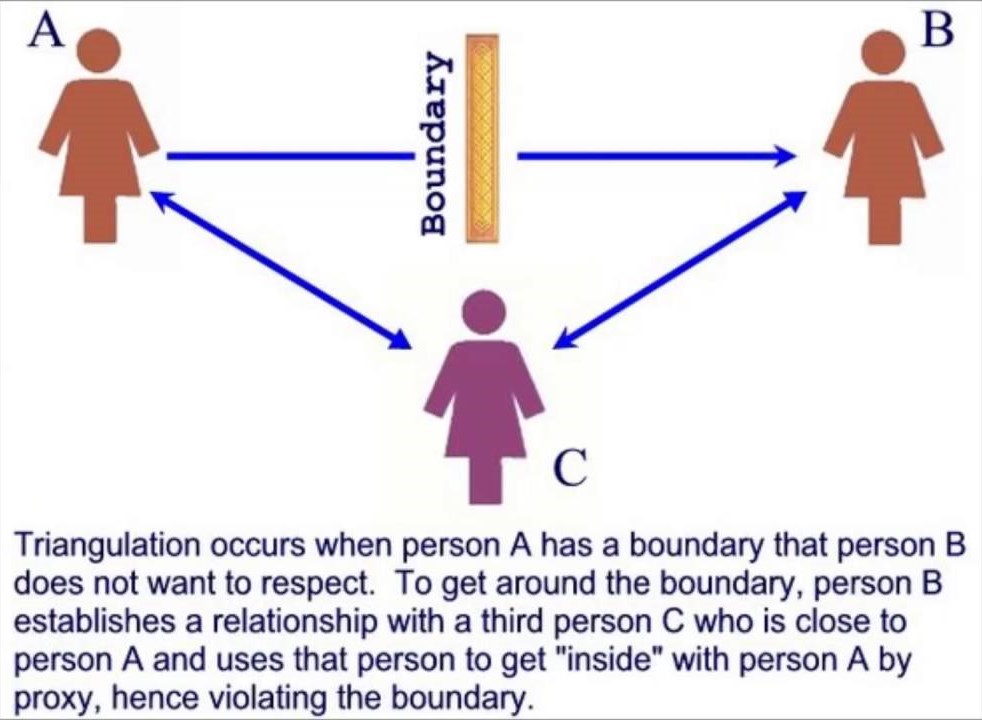January 2023

We can no longer rely on the Supreme Court’s outdated assumption that no one can control the inward workings of our mind.
Susie Alegre, Senior Fellow at CIGI
Introduction
I have authored several articles about my experiences with mind control in religious cults. They reference the seminal work of Dr. Robert Lifton, Thought Reform and the Psychology of Totalism, and his eight key signs of mind control. Lifton’s indicators are very accurate, but they are not the only measuring stick for cult activity. Another excellent tool is Dr. Steven Hassan’s BITE Model of Authoritarian Control. In this article, I will apply the BITE Model to the corporation where I recently worked and see what we discover. Are they simply an organization that strives to make a profit while also providing employment to others, or are they using shadowy, manipulative methods to control their employees?
This company is not a small Mom & Pop with an authoritarian owner. It is a large, well-respected company that has been in business over 50 years. It is recognized as a leader in its field and touted as a great place to work.
I will not name my former employer. They have deep pockets with which to sue me into terminal poverty. Who they are is not important. No number of articles will stop them from what they are doing. It is not illegal, although after reading this you may question whether it is ethical and moral. However, this information will hopefully enable you to better inform yourself about what may be lurking underneath a seemingly benign corporate façade, and thereby better protect yourself.
The BITE Model
The acronym BITE stands for Behavior, Information, Thought and Emotional Control. Each one of these four categories is broken down into criteria, some of which have lists of sub-criteria. I compared the work environment at my company to these categories and their criteria. Below is the percentage of controlling criteria that I saw present under each category.
| Behavior Control | 60% |
| Information Control | 100% |
| Thought Control | 55% |
| Emotional Control | 63% |
Providing detailed examples for each criteria met in this model (26 out of 40) would require an entire book, and this is just an article. I will provide brief examples of several criteria met in each category. The rest are all there, despite not being specifically outlined here. I will show a list of the BITE criteria present at this company after the examples. A complete list of all BITE Model categories and their criteria are at the end of the article. I encourage you to apply them to your own organization to see how many fit.
Behavior Control
My company met 9 out of the 25 criteria for Behavior Control. However, 10 of these 25 criteria are illegal and criminal activities like murder, torture, kidnapping and rape. Any company committing these acts or enabling them would very quickly go out of business. Removing these 10 illegal activities adjusts this to 9 out of 15 criteria met for a total of 60%. I will focus on these three criteria:
- Manipulation and deprivation of sleep
- Major time spent with group indoctrination and rituals
- Impose rigid rules and regulation
Manipulation and Deprivation of Sleep
Salaried workers were paid for 40 hours of work per week. It was understood that they would sometimes be required to work more than 40 hours. However, the company exploited this to a minimum of 50 hours per week, often more. Working less than 40 hours was not permitted and subject to disciplinary action. Consistently working under 50 hours was unofficially seen as a performance issue and would result in being deemed a poor performer. Lest you think this is only a minor increase in work time, it represents over one additional work day per week, for up to 65 additional work days (over 13 work weeks!) in a single year. Poor performers received substandard reviews, lower or no pay raises, undesirable projects and were marginalized behind their backs to both management and their peers. During layoffs, they were the first to be let go.
This is a case of explicit versus implicit programming, which is sophisticated manipulation. The explicit message here is that you are a salaried employee and hours worked are not an issue as long as you provide quality work in a timely manner. However, the implicit and unspoken message is that you better work over 50 hours, be available nights and weekends, and do whatever management requires of you or else they will make your life a corporate hell, perhaps even fire you. This conflicting dynamic makes an employee confused and uncertain. It raises their stress level, puts them on the defensive and makes it harder for them to think critically about the situation. Implicit programming also affects the employee at an emotional level, making it more likely that they continue to obey the programming even when nobody in a leadership position is around. Just think about how you react when you get a text or call from work. Do you feel momentary panic or annoyance? This is a common dynamic within cults.
The sleep deprivation part was simple. Long work hours and requirements to work nights and weekends to meet aggressive deadlines resulted in less sleep. This was probably a side effect of the environment, rather than planned, but it also weakened the employee’s resolve and critical thinking. This made them very susceptible to replacing their own values with those of the corporation.
Group Indoctrination and Rituals
These consisted of things under innocuous covers like team building, required employee events, happy hours, and even daily meetings without any real purpose. Company Purpose and Value statements were dutifully repeated, even required to be memorized and regurgitated. Some of these values, like Love, Joy and Integrity were not at all present, yet dutifully memorized and parroted. This is known as Loading the Language, which is also a cult tactic to shut down critical thinking. Any questions or issues were addressed simply by responding with one of these words and the discussion ended. More about loading the language below. They were also used effectively to guilt people, crossing their personal boundaries to squeeze more work and/or obedience out of them. This was frequently done to push personal social or ideological agendas that the company had no place advancing.
Team building exercises often violated people’s personal boundaries with physical touching and sharing of personal things. This is akin to one of the thought control criteria, Cult of Confession, developed by cult expert Dr. Robert J. Lifton. Just substitute the word “employee” for “follower.” It involves an act of surrender or total exposure. The follower is now “owned” by the group. The follower no longer has a sense of balance between worth and humility, experiencing a loss of boundaries between what is secret (known to the inner self) and what the group knows.
Other team activities included things like dress ups, dunking booths, performing skits and a host of other things that made many people uncomfortable. I question the efficacy of corporate team building and whether it produces anything of value. Studies indicate that team building activities are often worse than useless.1,2 They certainly meet the criteria of ritual indoctrination.
Impose Rigid Rules and Regulations
Best practices. Process. Compliance. Governance. Inclusion. Valid concepts, or more loaded buzzwords? All of these have value when applied correctly and moderately, but they were the overarching way of work at this company. Moreover, they were mostly the opinions of the persons spouting them or the latest management fad de jure. These rigid rules actually got in the way of work and became easy levers to control employees. Need a minor update to the website? Submit this pile of e-documents, attend three meetings and it will be scheduled for the next week after approval from two managers and a director. All this for five minutes of actual work which was not understood by 90% of those involved in the process. One particularly bizarre requirement involved attaching two blank documents with a precise naming format to an online request. If either of the documents was missing or named slightly incorrectly, the entire request would be denied and there would be at least one more week delay. The reasoning was that work from a particular team that did not fit into the generic process would still have to submit all the required documents. They had to be named precisely so that the approver, who understood nothing about the requirement nor even looked at the blank documents, would know that everything was in place to approve the request.
The time wasted was not the worst thing however, it was the use of this rigid framework to beat down and control employees. The primary role of the rules and regulations became controlling the employees and taking away their autonomy, their freedom to make choices. It forced them to do juvenile and dehumanizing things, practically begging, just to do their job. At any time in the process, the whim of a manager or administrative “approver” could send them back to square one to start all over again. Their job or profession was no longer the focus. Rather it became obeying the dictates of the system, which often had little to do with the job. Moreover, it also gave management another cudgel to beat control into employees, who feared receiving reprimands or negative evaluations for failing to follow the process. “Well George, I’d love to give you a pay raise this year, but you failed to meet expectations. On two occasions you forgot to attach the blank documents to the approval process and on three occasions you named them incorrectly.”
As another example, one of the required rules for updates to the company website was for the lead developer to inform various stake holders when the update had been completed. In almost every instance, his manager criticized the developer for either over- or under-communicating. He left the criteria very vague, so the developer never met the mark. When the developer asked him to specifically outline the criteria, the manger would say, “Just use your best judgment” and once inferred that even a child could do it. This had nothing to do with the developer’s profession as a software engineer. It was just a beat down that the manager could use as a lever to control him. His “communication skills” were addressed in every annual review, but his professional skills were rarely mentioned. Ironically, he was a published author who had won awards for written articles. Apparently, the court of public opinion had no problems with his “communication skills.”
Information Control
My company met 6 out of the 6 criteria for Information Control, giving it a perfect score of 100% in this cultic control category. I will focus on these three criteria:
- Deception
- Extensive use of generated information and propaganda
- Unethical use of confession
Deception
Deception, lies and half-truths permeated the entire organization. Leaders at every level misled and lied to employees regularly, about projects, about benefits, about the direction of the company, about commitments, about job security, and about many other things. Employees were vocally and frequently promised unlimited time off, which then capped at two weeks when they really needed it. They were promised short and long-term disability, which the company then used legal loopholes to deny when an employee needed it. They spoke loudly of empowerment, but rarely empowered or even listened to employees. They spoke loudly of the company’s Christian values and often prayed before meetings, then treated employees in a markedly un-Christian manner.
Employees were often hired under false pretenses, with the work they actually ended up doing being nothing like what they were promised as a position. People from one department would routinely lie to people in another department. Contractors would lie to everybody. Failures were covered up and successes were embellished or even fabricated outright. One of the loudly touted company values was integrity, but people were routinely used, abused and then kicked to the curb when no longer needed. The Human Resources department would often tell management things that employees shared with them in confidence, even after assuring employee that it was confidential and they would not tell anyone else. The employee victims of this tactic often found themselves ostracized, marginalized, or even summarily terminated.
Generated Information and Propaganda
The three propaganda arms of the company were the Purpose and Values, Human Resources, and the Christian façade. The Purpose and Values consisted of lofty words like courage, community, integrity, excellence, joy, servant’s heart, and even love. Employees were often required to repeat and read the definitions of these words before meetings. They were mostly used as one-way manipulative levers to extract additional work from employees beyond the standard 40-hour week. Did management over promise and need you to work the weekend? Then you needed to have a servant’s heart. Did your boss want you to accomplish the impossible, but would not provide the needed resources? Then you simply needed more courage. Toxic teammate ruining your work life? The leadership’s solution was to simply love them more. However, the leadership reserved the right treat you however they liked, conveniently ignoring all of these values. In fact, if you tried to call them on it, they would tell you that you were the one not following the values. This is classic gaslighting.
Human resources was the propaganda broadcast organ of the company. In addition to frequent email blasts and events that pushed the Purpose and Values, they championed other aspects of the company that bordered on outright lies, like the unlimited time off deception described above. HR also mounted an aggressive campaign to manipulate employees to return to the office against their will after two years of successful remote work during the COVID pandemic. The details are here in another article about generating propaganda through loading the language. One wonders if they wanted employees physically present in order to manipulate and control them more effectively. There certainly was no good reason given for returning to the office after a highly profitable year of remote work with record high morale.
I found the Christian façade the most reprehensible of this unholy triad. It preyed on people’s faith to manipulate and control them. The hypocritical contrast between their flowery words and uncaring actions was blatant even to casual observers. The corporate leadership would pray to Jesus in front of the assembled crowd before every big meeting, then lay off people or deny the corporate benefits they were promised when hired. One director, nicknamed “The Reverend,” would gush forth amazing prayer oratories at the start of meetings, followed by employees being castigated, marginalized or coerced to work more hours. I had a required 1-on-1 meeting with “The Reverend” during which he never looked up from his computer screen while we were talking. I threw in some bizarre comments to see if he was listening, but he only kept responding, “Yeah, that’s great.” He was wasting both his time and mine with a façade of being a caring and involved leader.
Unethical Use of Confession
I alluded to one example of this above with Human Resources telling management confidential information that employees shared with them, even after HR guaranteed it would be kept confidential. Another example was a tacit requirement for employees to accept blame for the errors or oversights of management. Management would hold long meetings, browbeating employees until they accepted responsibility for whatever went wrong. Nobody could leave the meeting until an employee confessed, “It was my fault.” I described this in detail in another article about mobbing at the same company.
Meetings with some managers and directors were nothing more than data mining sessions for them to discover things with which to manipulate employees. They would delve far outside work-related topics into employee personal issues, even presuming to give psychological advice on what employees were to do. If this was questioned, they would either deny it happened or claim it was a misunderstanding, then work behind the scenes to marginalize the employee as being problematic or having “anger issues.”
Thought Control
My company met 6 out of the 11 criteria for Thought Control, giving it a total of 55%. This is the lowest percentage of the four groups, but still over 50%. I will focus on these three criteria:
- Require members to internalize the group’s doctrine as truth
- Use of loaded language and clichés which constrict knowledge
- Forbidding critical questions about leaders, doctrine, or policy
Internalize Group Doctrine
Employees were required to recite the company Purpose and Values, along with their definitions, before most meetings. Purpose and Values were also recited in unison and championed during larger company events. Regular email blasts highlighted the Purpose and Values, along with illustrations of employees who exemplified them, usually someone in a leadership position. Employee evaluations were measured by how well they had internalized and adhered to these definitions, not their professional job descriptions and duties.
Use of Loaded Language
Loading the language consists of using jargon internal to and only understandable by the group. Constricting language constricts the person. Capacities for thinking and feeling are significantly reduced. Imagination is no longer a part of life experiences and the mind atrophies from disuse. This sounds quite extreme and certainly no company wants to reduce their employee’s capacities for thinking and feeling, or atrophy their minds. Or do they?
In addition to the loaded language of Purpose and Values, the company, led by Human Resources and the leadership, would redefine and repurpose words to manipulate the rank-and-file into doing things they normally would not do. It wasn’t fraud, murder or anything else illegal, but it was nonetheless manipulating people to do things against their will. This loaded language was repeated over and over again by leadership, by Human Resources, by emails and videos, and eventually by the indoctrinated peers themselves. Repetition is a classic mind control tactic. Some examples included:
- Unlimited time off that was actually capped at 2 weeks
- Redefining a 1–2-hour commute with toll fees as more convenient than working from home
- Redefining servant’s heart to mean sacrificing family, health and sleep for the company
- Redefining community to mean the company, rather than your own family or neighborhood
Forbidding Critical Questions
This area was another case of explicit versus implicit programming. The explicit, public message was that there was an open-door policy and the leadership encouraged employee questions, even the difficult ones. However, the implicit message was often that you would suffer some sort of negative action for negative questions. It was never framed as a response to the question, but rather how you asked it, when you asked, or where you asked it. Sometimes the employee would be declared to have an “anger problem” because of the way he phrased the question or a “communication problem” because he should have voiced it in a different venue. This would lead to the manager creating an action plan for the employee to correct his “problem” and a year or more of 1-on-1 meetings to discuss progress. This is what is known as administrative punishment. Most employees would just keep their mouths shut rather than endure it.
The company also had a circular method of addressing anonymous issues raised during periodic employee surveys. The surveys were anonymous by name only, but noted the department and team. The negative questions would be referred back to the department or team managers for discussion with their employees on how to arrive at solutions. I never saw a single solution, just more data mining for who might have asked the question and then later administrative punishment for an unrelated reason. The message was clear. Keep your negative comments and questions to yourself.
Emotional Control
My company met 5 out of the 8 criteria for final category of Emotional Control, giving it a total of 63%. I will focus on these three criteria:
- Manipulate and narrow the range of feelings
- Make the person feel that problems are always their own fault, never the leader’s or the group’s
- Public confessions of sins
Manipulate/Narrow the Range of Feelings
Employees were not permitted to get upset when managers or directors did not provide resources, lied to them, or broke commitments to them and then left the employees to face the consequences. Even raising the point that a leader had failed to honor their promise was deemed an “anger issue” and their manager would create a performance plan to address the issue. Some managers were adept at creating situations like this so they could then claim anger issues on the part of employees they wished to either control more effectively, deny promotions or set up for eventual termination.
This was very dehumanizing to the employees as they were deprived of the basic human right to get upset when someone wronged them. They certainly had no rights to defend themselves or voice how they felt about it. If they dared to do so, they were branded as having an “anger problem” and declared as somehow mentally defective. One of my previous articles, The “Mob” Boss, illustrates this control tactic in detail.
All Problems are the Employee’s Fault
Nothing was ever the fault of anyone in a management position. Even if they held all the keys to something that the employee needed and failed to follow through, they would claim that the employee did not raise enough urgency to cut through all the other important things they were doing. Even if the employee had no control over the situation or was not give the tools/access they needed, it would still be their fault and they would get called to the carpet for it. The closest any manager ever came to accepting responsibility was to say something like, “I am sorry that the person who reported to me screwed this up.” Of course, this was a cycle that would lead to more “anger issues” and enable greater control of the employee.
Public Confessions of Sin
This dovetails with the control technique Unethical Use of Confession above. Where unethical use takes what was told in confidence and uses it against the person, this control method forces the person to expose it to the world, thereby marginalizing them as a person. Fault-finding meetings were common whenever something negative happened at the company. The standard procedure for these meetings was to zero in on a target employee and then brow beat them into a public confession that whatever happened was their fault. The meeting would not end until a public confession was obtained. Since it could go on for hours, other employees would sometimes exert peer pressure for the “guilty” party to just hurry up and admit something so they could adjourn and leave. Managers would deflect any attempts to hold themselves accountable and reject any mitigating circumstances. Afterwards, this documented admission of guilt would be held over the head of the employee and used as leverage to get them to do more work, threaten them with negative evaluations, or as part of a case to terminate them.
BITE Model Criteria Met by the Company
Behavior Control
- Manipulation and deprivation of sleep
- Financial exploitation/dependence
- Restrict leisure, entertainment, vacation time
- Major time spent with group indoctrination and rituals (team building)
- Permission required for major decisions
- Rewards and punishments used to modify behaviors, both positive and negative
- Discourage individualism, encourage group-think
- Impose rigid rules and regulations
- Instill dependency and obedience
[Meets 9 out of 25 criteria = 36%. This is still high considering 10 out of these 25 criteria are illegal things like murder, torture, kidnapping and rape; adjusted percentage of legal activities is 9 out of 15 criteria = 60%]
Information Control
- Deception
- Deliberately withhold information
- Distort information to make it more acceptable
- Systematically lie to members
- Keep members busy so they don’t have time to think and investigate
- Compartmentalize information into outsider vs. insider
- Ensure information is not freely accessible
- Control information at different levels and missions within the group
- Allow only leadership to decide who needs to know what and when
- Encourage spying on members
- Report deviant actions/attitudes to leadership
- Ensure that individual behavior is monitored
- Extensive use of cult-generated information and propaganda
- Newsletters, emails, videos
- Misquoting statements or using them out of context from non-cult sources
- Unethical use of confession (forcing people to confess responsibility when they are not responsible)
[Meets 6 out of 6 criteria = 100%]
Thought Control
- Require members to internalize the group’s doctrine as truth
- Adopting the group’s “map of reality” as reality
- Instill black and white thinking
- Use of loaded language and cliches which constrict knowledge, stop critical thoughts and reduce complexities into platitudinous buzz words
- Teaching thought-stopping techniques which shut down reality testing by stopping negative thoughts and allowing only positive thoughts (“leadership” training), including:
- Denial, rationalization, justification, wishful thinking
- Praying
- Rejection of rational analysis, critical thinking, constructive criticism
- Forbidding critical questions about leader, doctrine, or policy (explicit [open door policy] versus implicit [administrative punishment if you speak])
- Instill a new “map of reality”
[ 6 out of 11 criteria = 55%]
Emotional Control
- Manipulate and narrow the range of feelings (defending yourself = anger issues)
- Make the person feel that problems are always their own fault, never the leader’s or the group’s
- Promote feelings of guilt or unworthiness, such as:
- You are not living up to your potential
- Your thoughts/actions are irrelevant
- Social guilt (for not participating in events)
- Public confessions of sins (meetings go on until person accepts blame)
- Shunning those who leave
[5 out of 8 criteria = 63%]
Conclusion
Is this company a cult? I am not qualified to apply that label, but in my mind, it exhibited more than enough cultic traits for me to leave. Many of these traits are common to other corporations. I think it is a safe bet that many corporate employees will recognize at least some of these control tactics at their place of employment. Are they intentionally implemented, or is it just the nature of the beast? I cannot say for certain, but I believe it is mostly intentional.
A cursory Google search reveals articles on how to build a cult-like corporate culture to improve the business. The authors naively assume that because one or more cult criteria, such as religion, phony self-improvement or not allowing people to leave, are not met then it is not a cult. A group does not need to meet all, or even most, of the criteria to be a cult. The authors also seem to have little, if any, understanding of mind control. They confuse it with brainwashing, which is a completely different thing and is not done by these companies. Brainwashing effects quickly cease when the abuser is not present. Mind control remains because the victims believe it to be their own thoughts and beliefs, which is far more beneficial to corporate (and cult) leadership. Few of these articles give any thought to the morality or collateral damage to people caused by implementing these processes. Why should they? It is not illegal and probably never will be. It also benefits the company and those at the top who profit from it. It is up to the individual to educate themselves about this dynamic and how to defend against it. At least then a person can make an informed choice about whether to participate.
Remember, not every, or even most, criteria of the BITE Model need to be met in order for an organization to be cultic.
References
1 Forbes: The Ugly Truth About Team-Building
2 Fast Company: Why Team-Building Exercises Are Useless
The BITE Model
Developed by cult and mind control expert Dr. Steven Hassan.
Behavior Control
- Regulate individual’s physical reality
- Dictate where, how, and with whom the member lives and associates or isolates
- When, how and with whom the member has sex
- Control types of clothing and hairstyles
- Regulate diet – food and drink, hunger and/or fasting
- Manipulation and deprivation of sleep
- Financial exploitation, manipulation or dependence
- Restrict leisure, entertainment, vacation time
- Major time spent with group indoctrination and rituals and/or self indoctrination including the Internet
- Permission required for major decisions
- Rewards and punishments used to modify behaviors, both positive and negative
- Discourage individualism, encourage group-think
- Impose rigid rules and regulations
- Punish disobedience by beating, torture, burning, cutting, rape, or tattooing/branding
- Threaten harm to family and friends
- Force individual to rape or be raped
- Encourage and engage in corporal punishment
- Instill dependency and obedience
- Kidnapping
- Beating
- Torture
- Rape
- Separation of Families
- Imprisonment
- Murder
Information Control
- Deception:
- Deliberately withhold information
- Distort information to make it more acceptable
- Systematically lie to the cult member
- Minimize or discourage access to non-cult sources of information, including:
- Internet, TV, radio, books, articles, newspapers, magazines, media
- Critical information
- Former members
- Keep members busy so they don’t have time to think and investigate
- Control through cell phone with texting, calls, internet tracking
- Compartmentalize information into Outsider vs. Insider doctrines
- Ensure that information is not freely accessible
- Control information at different levels and missions within group
- Allow only leadership to decide who needs to know what and when
- Encourage spying on other members
- Impose a buddy system to monitor and control member
- Report deviant thoughts, feelings and actions to leadership
- Ensure that individual behavior is monitored by group
- Extensive use of cult-generated information and propaganda, including:
- Newsletters, magazines, journals, audiotapes, videotapes, YouTube, movies and other media
- Misquoting statements or using them out of context from non-cult sources
- Unethical use of confession
- Information about sins used to disrupt and/or dissolve identity boundaries
- Withholding forgiveness or absolution
- Manipulation of memory, possible false memories
Thought Control
- Require members to internalize the group’s doctrine as truth
- Adopting the group’s ‘map of reality’ as reality
- Instill black and white thinking
- Decide between good vs. evil
- Organize people into us vs. them (insiders vs. outsiders)
- Change person’s name and identity
- Use of loaded language and clichés which constrict knowledge, stop critical thoughts and reduce complexities into platitudinous buzz words
- Encourage only ‘good and proper’ thoughts
- Hypnotic techniques are used to alter mental states, undermine critical thinking and even to age regress the member
- Memories are manipulated and false memories are created
- Teaching thought-stopping techniques which shut down reality testing by stopping negative thoughts and allowing only positive thoughts, including:
- Denial, rationalization, justification, wishful thinking
- Chanting
- Meditating
- Praying
- Speaking in tongues
- Singing or humming
- Rejection of rational analysis, critical thinking, constructive criticism
- Forbid critical questions about leader, doctrine, or policy allowed
- Labeling alternative belief systems as illegitimate, evil, or not useful
- Instill new “map of reality”
Emotional Control
- Manipulate and narrow the range of feelings – some emotions and/or needs are deemed as evil, wrong or selfish
- Teach emotion-stopping techniques to block feelings of homesickness, anger, doubt
- Make the person feel that problems are always their own fault, never the leader’s or the group’s fault
- Promote feelings of guilt or unworthiness, such as:
- Identity guilt
- You are not living up to your potential
- Your family is deficient
- Your past is suspect
- Your affiliations are unwise
- Your thoughts, feelings, actions are irrelevant or selfish
- Social guilt
- Historical guilt
- Instill fear, such as fear of:
- Thinking independently
- The outside world
- Enemies
- Losing one’s salvation
- Leaving or being shunned by the group
- Other’s disapproval
- Historical guilt
- Extremes of emotional highs and lows – love bombing and praise one moment and then declaring you are horrible sinner
- Ritualistic and sometimes public confession of sins
- Phobia indoctrination: inculcating irrational fears about leaving the group or questioning the leader’s authority
- No happiness or fulfillment possible outside of the group
- Terrible consequences if you leave: hell, demon possession, incurable diseases, accidents, suicide, insanity, 10,000 reincarnations, etc.
- Shunning of those who leave; fear of being rejected by friends and family
- Never a legitimate reason to leave; those who leave are weak, undisciplined, unspiritual, worldly, brainwashed by family or counselor, or seduced by money, sex, or rock and roll
- Threats of harm to ex-member and family

















